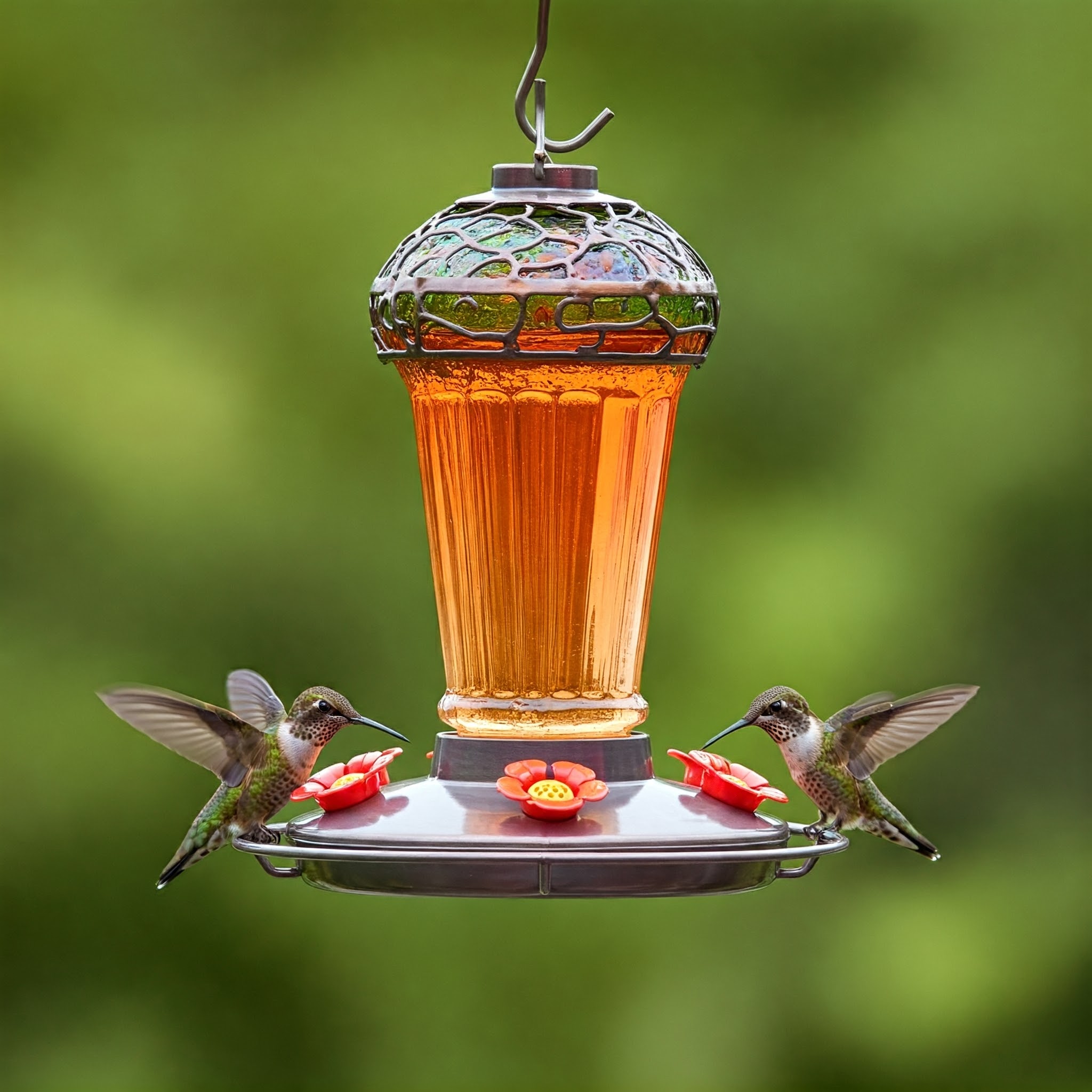Want to bring more color and movement to your backyard? It’s as simple as whipping up your own hummingbird nectar from the comfort of your kitchen. This might sound daunting at first, but trust me, it’s not only quick but also a game-changer for your local hummingbird community.
Crafting your own nectar gives you control over the ingredients. Unlike some commercial products, homemade nectar means no artificial colors and no preservatives—just pure, natural sweetness. Hummingbirds thrive on nectar closest to what they find in nature, and by making it yourself, you’re giving them the very best.
Not only is homemade nectar healthier, it’s also easier on your wallet. A bag of sugar is inexpensive and lasts a long time compared to the cost of continually purchasing pre-made mixes. Plus, knowing what’s in your nectar gives you peace of mind.
In just a few minutes, I’ll show you how to make your own hummingbird nectar—a perfect balance of quick preparation and quality. You’ll see your yard lighten up with these incredible creatures in no time. Ready to jump in? Let’s get started!
Gather These Essential Ingredients & Supplies
Getting ready to make your own nectar starts with gathering a few simple ingredients and supplies. Don’t worry—this part’s a breeze, and there’s a good chance you have most of what you need right in your kitchen.
You’ll need just two ingredients: white granulated sugar and water. It’s important to use white sugar because it closely matches the natural sucrose found in flowers, giving hummingbirds the energy they need. Some might wonder about other sweeteners like brown sugar or honey. Avoid those, as they can be harmful to these tiny birds.
Next, be sure to have a few basic kitchen supplies on hand. A measuring cup, saucepan or kettle, and a stirring spoon will get the job done. If you have a clean hummingbird feeder ready, you’re all set; otherwise, now’s a great time to give it a quick scrub. Clear out any old nectar or residue to ensure a fresh and inviting meal for your visitors.
When it comes to water, filtered is ideal, but if using tap water, boiling it safely preps it for nectar-making. This not only removes impurities but also makes it easier for sugar to dissolve fully. By gathering these simple ingredients and tools, you’ll be ready to make fresh, homemade hummingbird nectar in no time.
Quick and Easy Steps to Create Your Nectar
Getting started on making your own hummingbird nectar is straightforward and rewarding. First up is preparing the water. Heating it plays a crucial role here, especially if you’re using tap water. Bringing 4 cups of water to a boil not only ensures cleanliness but also makes sure the sugar dissolves efficiently. This step is optional if you’re using filtered water, but boiling is a handy trick to have up your sleeve.
Once your water’s ready, take it off the heat and measure out 1 cup of white granulated sugar. Pour the sugar into the hot water and stir continuously. It’s important to make sure every single granule of sugar dissolves, creating a smooth solution. Think of this as the core energy source that mimics the nectar found in nature.
After your sugar is fully dissolved, give the nectar some time to cool down. Serving it while it’s hot is a big no-no. Let it reach room temperature for the comfort and safety of the hummingbirds. If you’re in a hurry, you can stick the mixture in the fridge to speed things up.
With your nectar cooled and ready, fill your clean hummingbird feeder with the freshly prepared solution. Choose a shady spot to hang it, avoiding direct sunlight that might spoil the nectar faster. Keeping it shaded helps maintain freshness, making your garden an irresistible stop for hummingbirds.
Expert Tips for Perfect Nectar Every Time
A few extra tips can make a big difference in keeping your hummingbird visitors healthy and happy. One key rule is to stick to plain white sugar, steering clear of honey, brown sugar, or any artificial sweeteners. These might seem like good alternatives but can actually be harmful to hummingbirds, affecting their digestion and overall health.
Staying on top of changing the nectar is also critical. In warm weather, refresh your feeder every 2-3 days. Spoiled nectar can ferment, which isn’t good for the birds. A fresh supply keeps them coming back and maintains their wellbeing. Monitor your feeder in cooler temperatures but extend this timeframe a bit if it’s not too hot.
Cleaning your feeder is as important as putting out fresh nectar. Residue can build up quickly, so a thorough clean with hot water between refills helps prevent disease transmission. Dish soap is fine, but make sure you rinse it off thoroughly. An investment in a feeder brush is a nice little tool to have for keeping every nook and cranny sparkling.
Finally, when you’ve prepared more nectar than your feeder can hold, store the extra in the fridge. It keeps well for up to a week, meaning you’re always ready for a top-up. This way, you’ll always be hummingbird-ready without the hustle of making a new batch every day.
Explore Alternatives: When Convenience Meets Comfort
Considering options for keeping nectar flowing smoothly during chilly weather can be as simple as checking out premade feeder heaters. These nifty devices ensure that the nectar remains at an inviting temperature, even when the temperatures outside start to drop.
One great benefit of using a feeder heater is maintaining a consistent nectar supply, particularly crucial in colder climates where a sudden freeze could make your nectar unusable. Instead of worrying about the weather, these heaters automatically adjust, ensuring your feeders are always ready to welcome feathered guests throughout the changing seasons.
If you’re curious about which feeder heaters work best, I recommend doing a little research or browsing trusted local or online stores. Product reviews can be invaluable at helping identify reliable and effective options without any trial-and-error hassles.
Given everything you’ve learned, making your own hummingbird nectar remains an ideal choice. However, these additional gadgets can support you in creating the most welcoming environment possible, offering a small touch of innovation that pairs perfectly with your homemade solutions.

